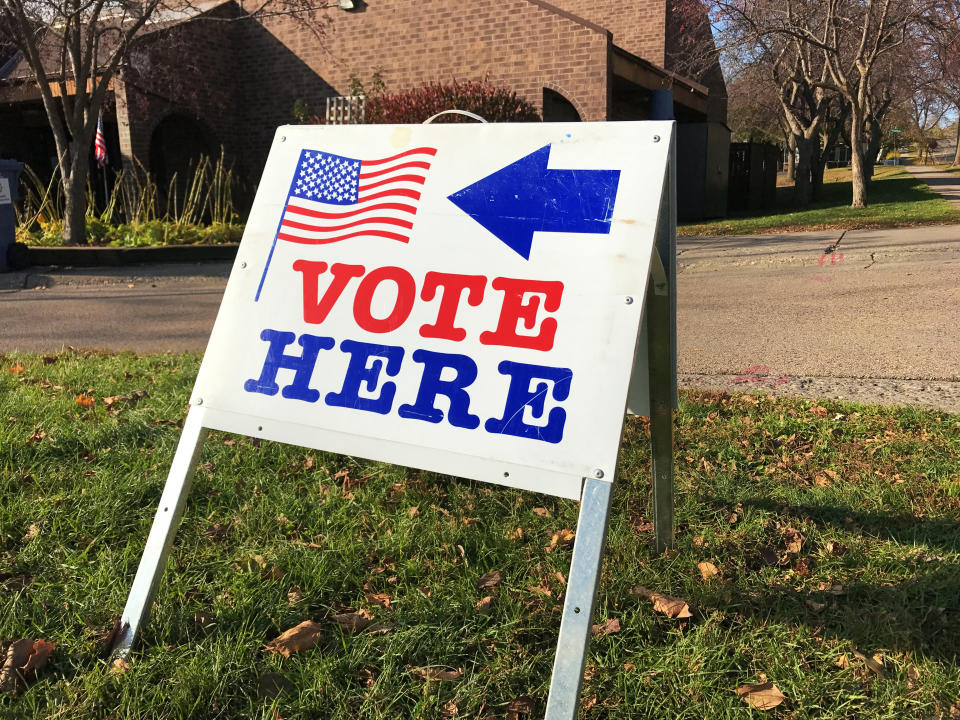How to trade the midterm elections
The outcome of the upcoming midterm elections may not require any dramatic revamps of your investing strategy.
“The market may react very briefly to a certain outcome,” said Scott Wren, senior global equity strategist at Wells Fargo Investment Institute in an interview with Yahoo Finance. “But within 2-6 weeks, it gets back to fundamentals and what the outlook for the economy is over the next 12 months.”
The mere existence of a midterm election — regardless of its outcome — is a positive catalyst historically. The S&P 500 (^GSPC) tends to rise 8% during the fourth quarter of a midterm election year, Goldman Sachs analysts said, led by chief U.S. equity strategist David Kostin, in a note to clients on Oct. 19. That’s double the median fourth-quarter return.

Plus, the S&P 500 was higher exactly one year after midterm election day, compared to midterm election day itself, for the past 18 midterm elections, which stems back to 1946. That’s according to Ryan Detrick, senior market strategist at LPL Research.
For specific sectors of the markets though, such as pharmaceuticals and defense, the calculus may be more closely linked to the outcome of the election.
The consensus for this year’s midterms include Democrats regaining a majority in the House of Representatives and Republicans maintaining their slight majority in the Senate.
Pharmaceuticals
This predicted outcome would benefit the pharmaceutical space, as more gridlock in Washington makes it less likely that drug-pricing rules would come to fruition, Goldman Sachs analysts noted.
A more decisive victory by the Democrats — controlling both the House and the Senate — would spell trouble for pharma stocks.
“Should Democrats win both chambers, however, our economists believe health care policy would be the primary focus of the incoming 116th Congress,” the analysts wrote, referencing election week in 2006, when pharma stocks underperformed the S&P 500 by 400 basis points as the Democrats took control of the House of Representatives for the first time since the 1990s.
A third scenario could take shape — that is, if President Trump strikes a deal with Democrats on drug pricing. Trump has periodically slammed drug companies and their pricing in tweets and public speeches.
Defense
Defense and aerospace, a subset of the industrials sector, is another area of the market that lies in the blast zone of midterms.
Wren said defense stocks would likely be negatively affected by any scenario other than the Republicans keeping control of the Senate and the House. Defense spending is less of a priority in a Democratic controlled Congress, Wren noted.
The recent performance of defense stocks suggests investors aren’t worried about any meaningful midterm election impact. “The average aerospace and defense stock has returned 8% year-to-date, outperforming the S&P 500 by 300 bp and the broad Industrials sector by 1,000 bp,” Goldman Sachs analysts noted.
Technology
As for technology, a sector that has trounced the S&P 500’s year-to-date return almost threefold, Wren sees regulation risk on the horizon no matter who gets elected on November 6.
“I think there is going to be more regulatory pressure on any tech company that is in the business of monetizing customer data,” he noted, adding that tech regulation is a bipartisan issue.
Executives from Facebook (FB), Twitter (TWTR) and Alphabet’s Google (GOOGL) appeared on Capitol Hill throughout 2018 as lawmakers probed efforts to keep user data safe.
Regulation risk is one reason why Wren is neutral on tech and advising clients to keep their exposure to tech stocks at no more than 20% of their portfolios. Tech makes up 20% of the S&P 500’s market cap.
Scott Gamm is a reporter at Yahoo Finance. Follow him on Twitter @ScottGamm.
More from Scott Gamm:
Tax cuts are more than just a sugar high for public companies
